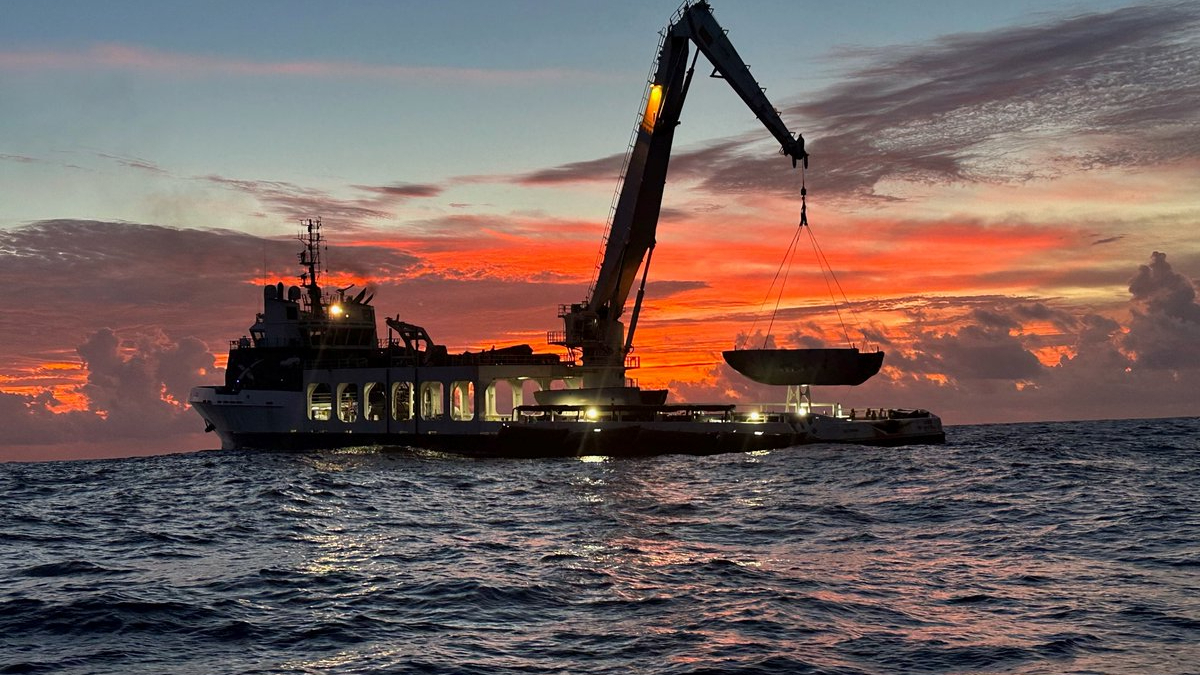
Rocket landings aren't the only aspect of SpaceX's reuse program.
The company also commonly recovers and re-flies its payload fairings, the clamshell coverings that protect satellites during launch, as a gorgeous new photo shows.
"SpaceX team aboard the recovery vessel Doug in the Atlantic securing a payload fairing half, which has supported 13 missions to date, after last night's Starlink launch from Florida," the company wrote in a post on X (formerly known as Twitter) on Saturday (Nov. 4) that featured a photo of the fairing recovery.
Related: Starlink satellite train: How to see and track it in the night sky
That photo was apparently taken at dawn on Saturday, for the sky behind the recovery boat is streaked with beautiful oranges and yellows.
Thirteen missions for a fairing half is impressive, but that Friday night (Nov. 3) launch from Florida's Cape Canaveral Space Force Station featured an even bigger number. It was the 18th liftoff for one of SpaceX's Falcon 9 rocket first stages, setting a new reusability record for the company.
The mission sent 22 more Starlink satellites to low Earth orbit. Starlink, SpaceX's broadband megaconstellation, now features more than 5,000 operational satellites, according to astrophysicist and satellite tracker Jonathan McDowell.
Get the Space.com Newsletter
Breaking space news, the latest updates on rocket launches, skywatching events and more!
The Falcon 9 booster landed safely on a ship at sea on Friday night about 8.5 minutes after liftoff, by the way. So it can, and probably will, fly again in the not-too-distant future.
Fairing fishing wasn't always SpaceX's go-to strategy. For a while, the company tried to catch falling fairing halves before they splashed down, using fast boats equipped with large nets.
But SpaceX soon concluded that brief exposure to corrosive saltwater is not a fairing reuse dealbreaker, and is fishing is much easier (though far less dramatic) than the aquatic-catcher's-mitt method. So, in 2021, the company retired the net boats.
Join our Space Forums to keep talking space on the latest missions, night sky and more! And if you have a news tip, correction or comment, let us know at: community@space.com.

Michael Wall is a Senior Space Writer with Space.com and joined the team in 2010. He primarily covers exoplanets, spaceflight and military space, but has been known to dabble in the space art beat. His book about the search for alien life, "Out There," was published on Nov. 13, 2018. Before becoming a science writer, Michael worked as a herpetologist and wildlife biologist. He has a Ph.D. in evolutionary biology from the University of Sydney, Australia, a bachelor's degree from the University of Arizona, and a graduate certificate in science writing from the University of California, Santa Cruz. To find out what his latest project is, you can follow Michael on Twitter.









